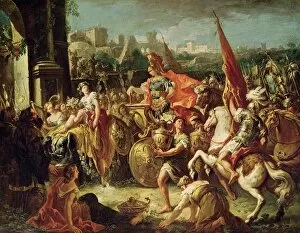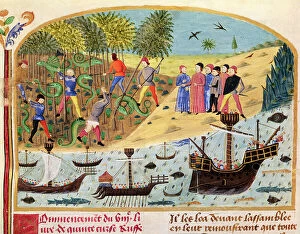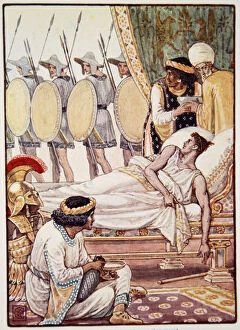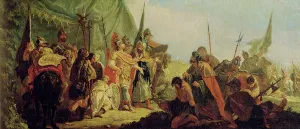Macedonian King Collection
"Unveiling the Legacy: The Macedonian King Alexander the Great" Step into history as we witness the grand entrance of Alexander the Great
All Professionally Made to Order for Quick Shipping
"Unveiling the Legacy: The Macedonian King Alexander the Great" Step into history as we witness the grand entrance of Alexander the Great, a legendary figure who left an indelible mark on civilization. With oil on canvas, "The Entrance of Alexander the Great into Babylon" captures his triumph and dominance. Intriguingly, Ms 1335 f. 167v reveals a darker side to this conqueror's story - "How Alexander the Great Killed and Martyred Calixten Cephobe and other Nobles before Caroutz. " Delve deeper into his complex character through this vellum manuscript. Marvel at another masterpiece in Ms 1335 f. 180 - "The Flotilla of Alexander the Great, " depicted with intricate detail on vellum. This artwork transports us to ancient times when naval power played a pivotal role in expanding empires. Witness one of history's most epic battles through "Alexander and Porus at the Battle of Hydaspes. " Painted with finesse on canvas, c. 1673, this piece encapsulates their clash for supremacy. Zooming in on details within this battle scene, we find ourselves captivated by every stroke in "Alexander and Porus at the Battle of Hydaspes (detail). " It highlights both leaders' determination amidst chaos. Ms 1335 f. 62v takes us across rivers as we follow "How Alexander the Great crossed Tigris and Euphrates. " This illuminating manuscript sheds light on his strategic brilliance during conquests. Sculpture enthusiasts will appreciate "Alexander the Great and Diogenes completed in 1693, " carved meticulously from marble. A meeting between two intellectual giants immortalized forever. Gaze upon an iconic portrait bust known as Azara herm - a representation that embodies Alexander's charisma and authority (356-323 BC). Its timeless beauty stands testament to his enduring legacy.


















